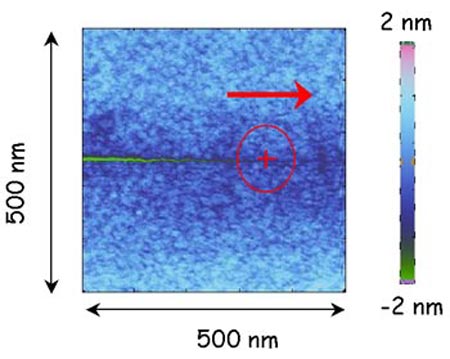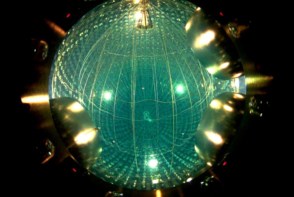Brittle materials like glass break in a completely different way to metals. Whereas metals deform before breaking, glass fractures abruptly. However, physicists from the University of Montpellier and the CEA laboratory in Saclay, near Paris have now shown that glass may behave like a metal when it fractures, but on smaller length scales (F Célarié et al. 2003 Phys. Rev. Lett. 90 075504)

In metals, cracks usually progress through the joining together of “damage” cavities that can originate within microstructural defects or at interfaces. This “ductile” type of fracture leads to very rough surfaces at the micrometre scale.
When glass is observed with an optical microscope, the fracture surfaces appear to be very smooth. However, when analyzed at the nanometre scale using an atomic force microscope (AFM), glass surfaces show a roughness very similar to that seen in metallic fracture.
In their experiment, Christian Marlière, Claude Guillot and co-workers performed fracture tests on samples of aluminosilicate glass. They drilled a cylindrical hole in the centre of the sample surface and then applied a perpendicular load using a compressive machine. The external stress on the sample was gradually increased by constantly applying this pressure and was removed as soon as a crack front began to propagate along the sample.
The team monitored the formation of the crack by AFM and find cavities that typically measured 20 nm in length and 5 nm in width ahead of the crack tip. They also observed that these cavities grew with time until they joined up (see video “birth, growth and death of nanocavities”)
To confirm that the spots observed were actual damage cavities, the group used fracture surface topography analysis – a technique normally used to study damage in metals. This method reveals the cavities in the order in which they appear. The researchers showed that the spots seen prior to fracture are depressions, which can be clearly seen in the topography of the final crack structure.
The group now hopes to use its experiment to study samples in three dimensions and correlate surface fracture characteristics with bulk behaviour. The results of the work may lead to the optimized design structures of glass and could also shed light on the basic physical mechanisms of fracture.




